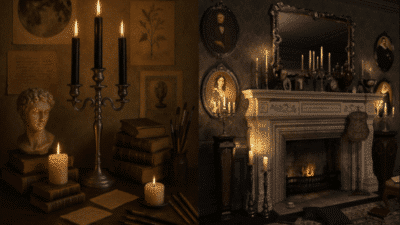Ever walked into a room and just felt… off? Or perhaps entered a space and immediately felt a sense of calm and ease? That’s no accident, my friend. It’s often the subtle magic of energy at play, and it’s precisely what the ancient Chinese art of feng shui interior design aims to harness. Far from being a mystical, complicated practice, feng shui is essentially a super practical system for arranging your environment to boost positive energy, or “Chi,” in your life. Think of it as creating good vibes on demand in your home.
In a nutshell, feng shui is all about living in harmony with your surroundings. It’s about making your home a supportive sanctuary that helps you thrive, whether that means feeling more relaxed, more productive, or simply more at peace. We’re talking about creating spaces that nurture you, inspire you, and help you live your best life. No grand renovations needed – often, it’s the little tweaks that make the biggest difference. So, if you’re ready to unlock some seriously good vibes and turn your living space into a haven, let’s dive into how feng shui can casually transform your home.
What Exactly is Feng Shui? (Beyond the Buzzwords)
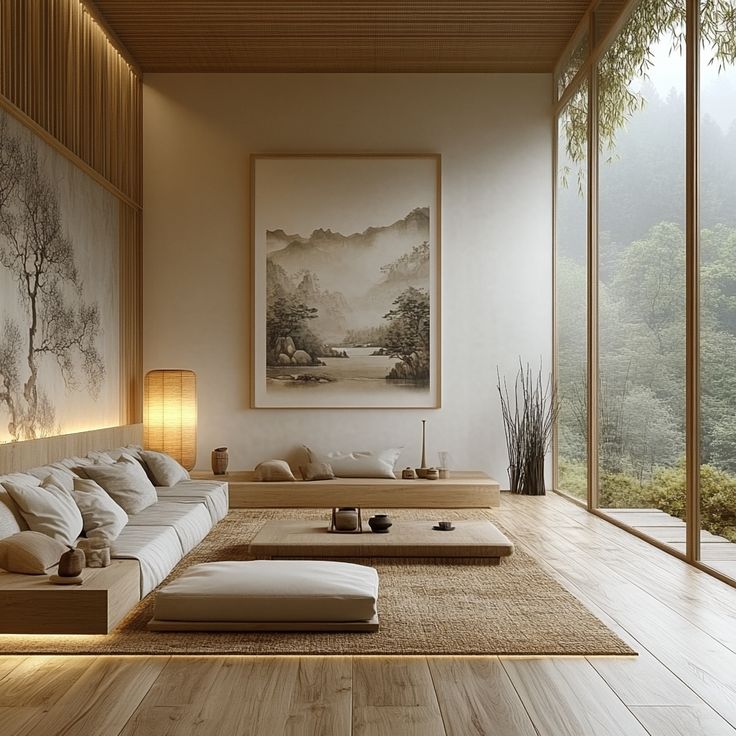


Let’s demystify feng shui a bit. The term literally translates to “wind and water” – ancient elements that flow, nurture, and shape our environment. It’s a philosophy that recognizes how profoundly our surroundings impact our well-being. At its heart are a few core concepts:
- Chi (Life Force Energy): This is the invisible energy that flows through everything – us, our homes, nature. Good feng shui aims to encourage a smooth, abundant flow of Chi, avoiding stagnant or chaotic energy. Imagine a gentle river compared to a blocked drain.
- Yin and Yang: This is the balance of opposing but complementary forces. Think light and dark, soft and hard, active and passive. A well-feng-shuied room balances these energies for comfort and vitality. A room that’s all sharp angles and bright lights might be too Yang; one that’s too dim and cluttered might be too Yin.
- The Five Elements: Wood, Fire, Earth, Metal, and Water. These elements represent different types of energy and qualities, and they interact in specific ways (both nourishing and controlling cycles). Incorporating them thoughtfully brings balance to a space.
- The Bagua Map: This is a grid or map that overlays your home’s floor plan, dividing it into nine areas, each corresponding to a specific life aspect like wealth, relationships, health, or career. We’ll get into this gem later!
The beauty of feng shui is that it’s not rigid. It’s adaptable, intuitive, and ultimately about making your home feel good to you. It’s about creating an environment that supports your goals and enhances your everyday experience.

The Command Position: Your Furniture’s Power Move
If there’s one feng shui concept you absolutely must master, it’s the “Command Position.” This isn’t about being bossy; it’s about empowerment and security. The Command Position refers to placing your most important furniture – your bed, desk, and main sofa – in a spot where you can see the door without being directly in line with it.
Why is this a big deal?
- Security: When you can see who’s coming and going, your subconscious feels safer. This reduces stress and helps you relax.
- Control: Being able to command the room gives you a sense of power over your life and circumstances.
- Opportunity: Psychologically, it puts you in a position to receive opportunities rather than be surprised by them.
Applying the Command Position:
- In the bedroom: Your bed should be placed against a solid wall, ideally diagonally opposite the door. You want a clear view of the entrance. Avoid placing your bed directly in front of the door or under a window.
- In the home office: Your desk should also face the door, with a solid wall behind you. This gives you a feeling of support and prevents “backstabbing” energy (symbolically, of course!).
- In the living room: Position your main sofa against a solid wall, with a good view of the room’s entrance.
Think about it: have you ever felt uneasy with your back to the door in a restaurant? That’s your primitive brain signaling a lack of command. Replicate that feeling of security and power in your home, and you’ll instantly feel more grounded. For more tips on making your living space shine, consider checking out articles like Mastering the Art of Professional Room Aesthetics.
Embracing the Five Elements for Balance

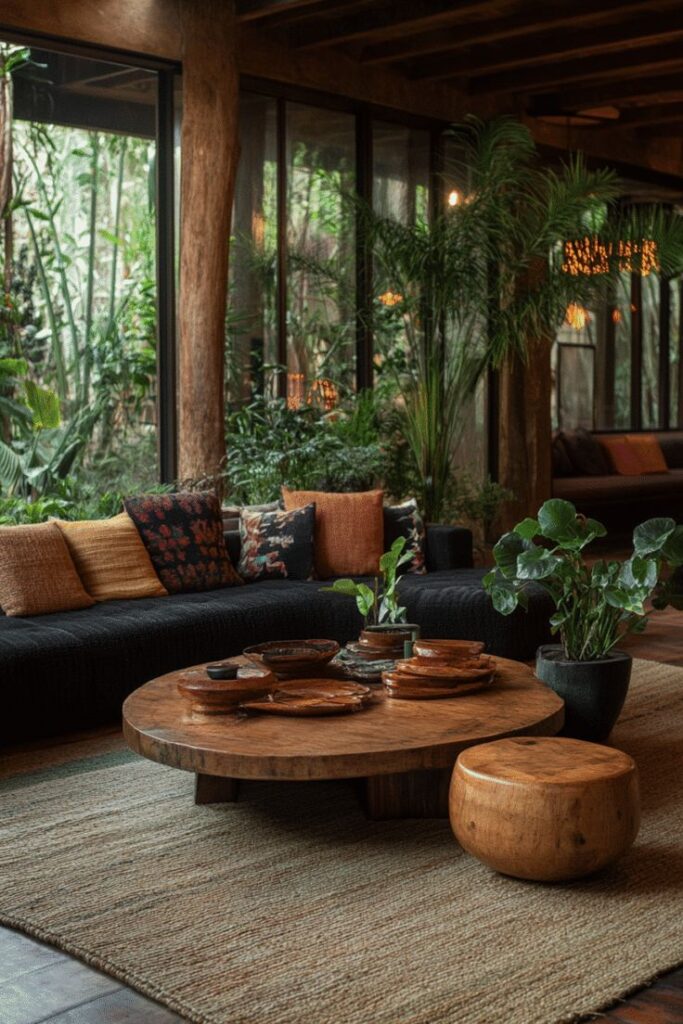

The Five Elements – Wood, Fire, Earth, Metal, and Water – are like the building blocks of energy in feng shui. Each element has associated colors, shapes, materials, and qualities. Balancing them in your home creates harmony and supports different aspects of your life.
Here’s a quick rundown:
- Wood: Represents growth, vitality, new beginnings, creativity.
- Colors: Greens, browns
- Shapes: Rectangular, columnar
- Materials: Wood furniture, plants, cotton, linen
- How to use: Great for offices, children’s rooms, or anywhere you want to foster growth and creativity. Add plants, wooden decor, or green accents.
- Fire: Represents passion, energy, inspiration, recognition.
- Colors: Reds, oranges, vibrant yellows, purples
- Shapes: Triangular, pointed
- Materials: Candles, fireplaces, bright lights, animal prints
- How to use: Use sparingly in bedrooms (can be too stimulating), but great for spaces where you want energy and enthusiasm, like a creative studio or dining room.
- Earth: Represents stability, grounding, nourishment, security.
- Colors: Earth tones like light yellows, browns, sandy colors
- Shapes: Square, flat
- Materials: Ceramics, stone, clay, low, solid furniture
- How to use: Perfect for grounding a space, bringing a sense of calm and stability. Excellent for living rooms and bedrooms. Think cozy rugs, pottery, and earthy fabrics.
- Metal: Represents precision, clarity, organization, efficiency.
- Colors: Whites, grays, metallics (gold, silver, bronze)
- Shapes: Round, oval
- Materials: Metal objects, glass, rocks, polished surfaces
- How to use: Ideal for offices, kitchens, or areas where you need focus and clarity. Minimalist decor, metal frames, and clean lines embody this element.
- Water: Represents flow, wisdom, intuition, connections.
- Colors: Blues, blacks
- Shapes: Wavy, asymmetrical
- Materials: Mirrors, glass, water features (fountains, aquariums), reflective surfaces
- How to use: Can bring a sense of calm and flow. Good for entryways (to attract wealth), or areas of contemplation. Be mindful not to overdo water in bedrooms as it can feel too cold.
The key is balance. A room dominated by one element might feel off. Too much Fire could lead to restlessness; too much Water might feel melancholic. A harmonious blend creates a space that truly supports you.
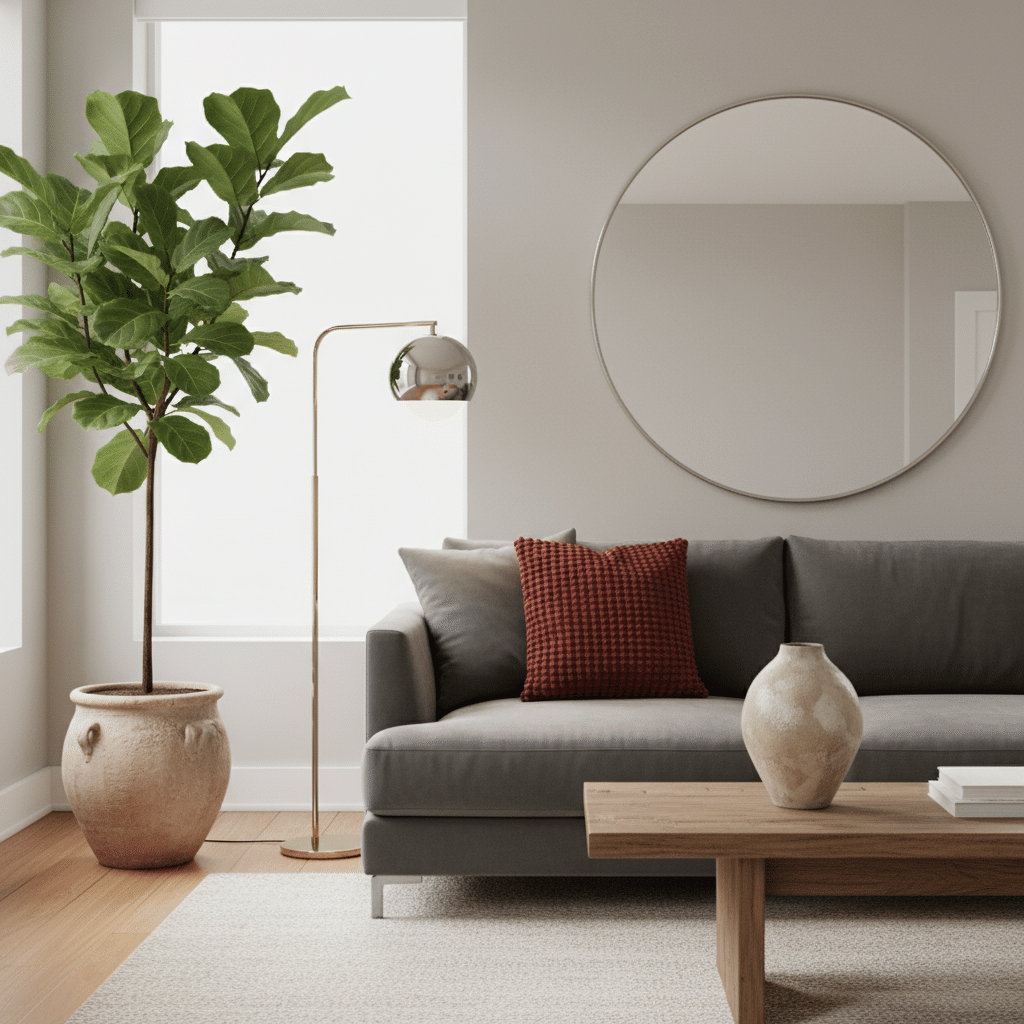
Decluttering for Clear Energy (and a Clear Mind)
If Chi is the life force energy, then clutter is like a clogged artery. It obstructs the flow, creates stagnation, and can drain your energy. From a feng shui perspective, clutter isn’t just untidy; it represents unfinished business, emotional baggage, and suppressed potential.
Think about it:
- Physical Clutter = Mental Clutter: A cluttered space often leads to a cluttered mind. It can make you feel overwhelmed, anxious, and less focused.
- Stagnant Energy: Piles of unused items, dusty corners, or broken things trap negative or stagnant energy, preventing fresh Chi from circulating.
- Blocked Opportunities: Symbolically, clutter can block new opportunities from entering your life. If your entryway is piled with shoes and mail, how can new energy or opportunities easily find their way in?
Your Decluttering Action Plan:
- Start Small: Don’t try to tackle your entire house in one weekend. Pick one drawer, one shelf, or one small area.
- Be Ruthless (but Kind): Ask yourself: “Do I love it? Do I need it? Does it serve a purpose?” If the answer is no to all three, it’s probably time to let it go.
- Find a Home for Everything: Once you’ve decluttered, make sure every item has a designated spot. This prevents new clutter from forming.
- Regular Maintenance: Decluttering isn’t a one-time event; it’s an ongoing process. A quick 10-minute tidy-up each day can work wonders.
Clearing out the old literally makes space for the new. It’s like opening a window to let fresh air in, not just physically, but energetically too. And if you’re looking for more ways to keep your home pristine, remember to consider practical aspects like how to prepare your roof for winter cleaning and maintenance tips. Maintaining every part of your home ensures a harmonious environment.
Color Me Calm (or Energetic!): Understanding Feng Shui Colors
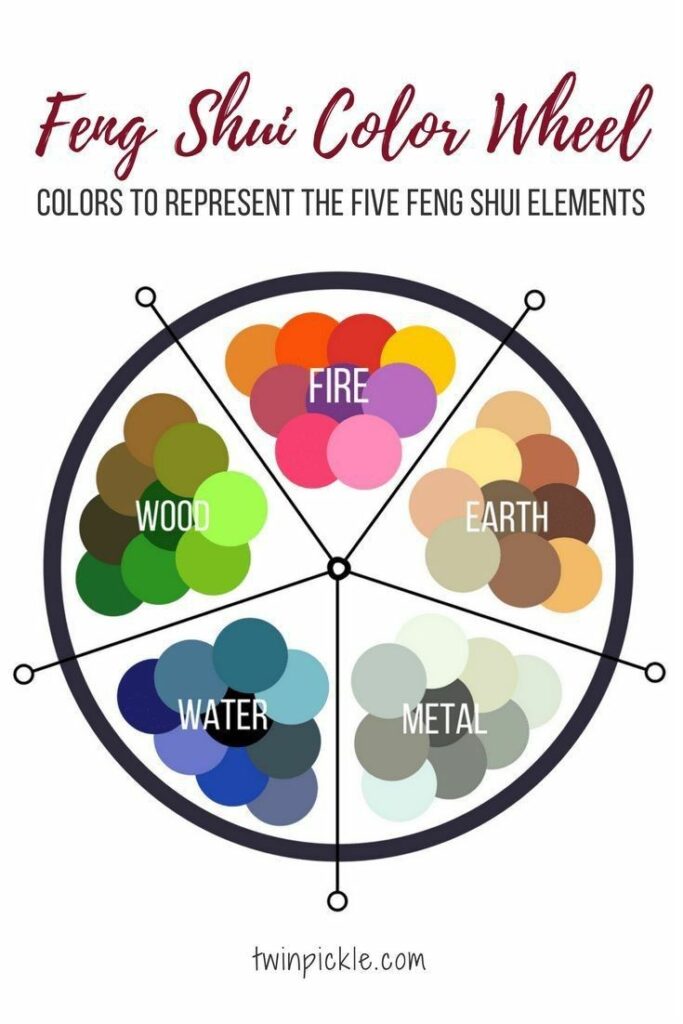

Colors are powerful tools in feng shui. They evoke emotions, influence moods, and represent the Five Elements. Choosing the right colors for different areas of your home can significantly impact the energy and how you feel in that space.
- Warm Colors (Reds, Oranges, Yellows): These are considered “Yang” and are energizing, stimulating, and warm. Great for living rooms, dining rooms, or creative spaces where you want lively conversation and activity. Use reds and oranges sparingly in bedrooms, as they can be too stimulating for sleep.
- Cool Colors (Blues, Greens, Purples): These are “Yin” and promote calm, relaxation, and introspection. Excellent for bedrooms, bathrooms, or meditation spaces. Lighter blues and greens are particularly soothing.
- Neutrals (Whites, Grays, Browns, Creams): These provide balance and grounding. They’re versatile and can be used to temper stronger colors or create a serene backdrop. Earth tones (browns, creams) are very grounding and supportive. Whites and grays bring clarity and a sense of cleanliness.
- Black: Represents water and depth. It can be sophisticated and provide a sense of mystery or wisdom. Use as an accent rather than a dominant color, especially in rooms where you want lightness.
A Few Tips:
- Consider the Room’s Purpose: A bedroom needs calming colors; a home office might benefit from colors that promote focus (like blues or whites).
- Look to the Bagua: As we’ll discuss, certain colors are associated with specific Bagua areas, which can be used to enhance those life aspects.
- Personal Preference Matters: Ultimately, you need to feel good in your space. Feng shui offers guidance, but your intuition is key. If a color makes you happy, there’s usually a way to incorporate it harmoniously. Sometimes, the best way to get inspired is by exploring
trending home decorto see how modern aesthetics can blend with timeless principles.

Bring Nature In: The Power of Plants and Natural Light
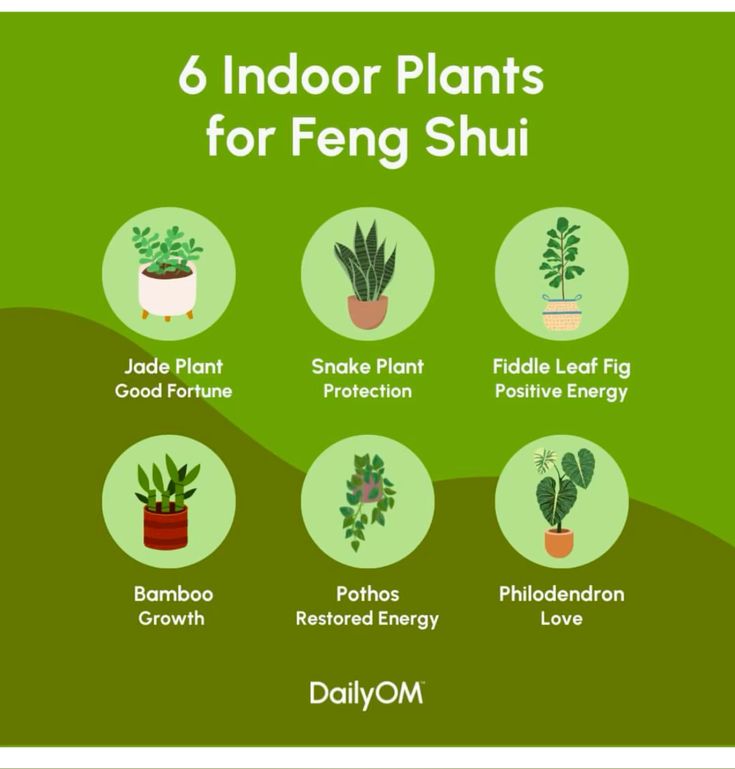
Connecting with nature is a fundamental aspect of feng shui. Bringing natural elements indoors helps to vitalize your space with fresh, positive Chi and promotes a sense of well-being.
- Plants: They are living things, constantly generating fresh Chi. They purify the air, soften sharp corners, and add the Wood element, representing growth and vitality.
- Best Plants: Choose healthy, vibrant plants with soft, rounded leaves. Avoid spiky plants (like cacti) in areas where you relax, as their sharp points can create “sha Chi” (negative energy). Snake plants, peace lilies, and money trees are popular feng shui choices.
- Placement: Good for living rooms, offices, and even bathrooms. Avoid too many plants in the bedroom, especially large ones, as they can produce too much energy for restful sleep.
- Natural Light: Abundant natural light is crucial for good feng shui. It’s energizing, uplifting, and helps to dispel stagnant energy.
- Maximize Light: Keep windows clean and unobstructed. Use sheer curtains or blinds that allow light to filter in. Mirrors can also be strategically placed to reflect natural light deeper into a room.
- Fresh Air: Open windows regularly, even for a few minutes, to allow fresh air to circulate and flush out stale energy. An air purifier can also help.
Incorporating natural elements isn’t just about aesthetics; it’s about creating a healthier, more vibrant living environment. It’s about bringing the healing power of the outdoors, inside. Think of how invigorating a walk in nature feels – you want to replicate a similar feeling in your home.
The Bagua Map: Mapping Your Home’s Life Areas

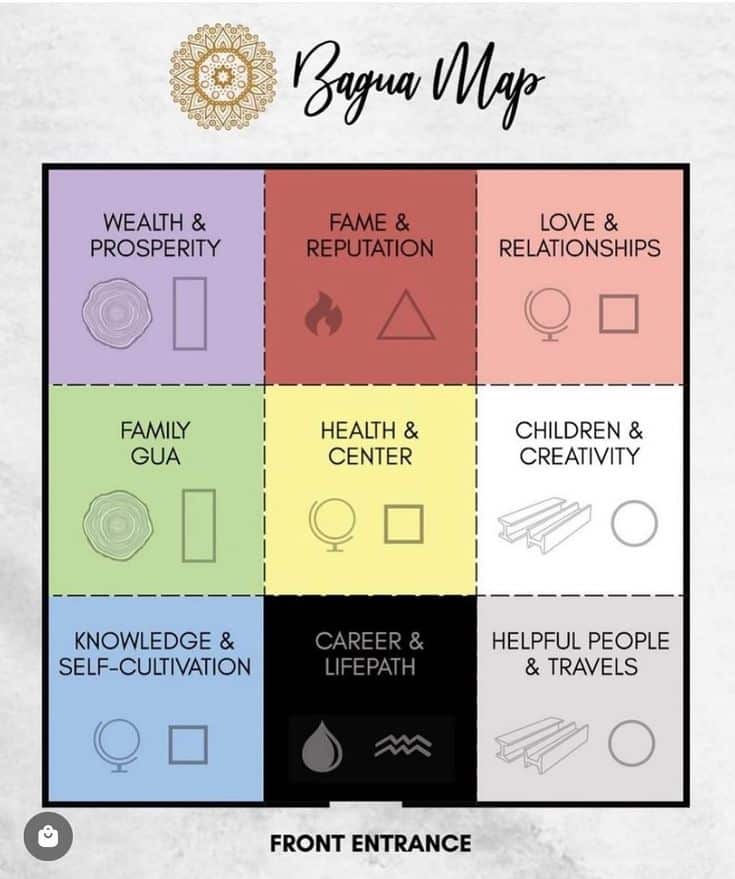
Ready for the secret sauce? The Bagua map is one of feng shui’s most powerful tools. It’s an octagonal or grid-like map that, when overlaid onto your home’s floor plan, divides it into nine distinct areas (or “guas”), each corresponding to a specific life aspiration or “area of influence.”
These areas are:
- Wealth & Prosperity: (Southeastern corner) – Associated with abundance, money, and financial flow.
- Fame & Reputation: (Southern center) – Linked to recognition, success, and how others perceive you.
- Love & Relationships: (Southwestern corner) – Governs partnerships, romance, and self-love.
- Family & Health: (Eastern center) – Represents well-being, ancestry, and community connections.
- Center/Tai Chi: (Center of home) – The heart of your home, representing overall health and unity.
- Creativity & Children: (Western center) – Inspires creativity, joy, and the well-being of children.
- Knowledge & Self-Cultivation: (Northeastern corner) – Supports learning, personal growth, and wisdom.
- Career & Path in Life: (Northern center) – Relates to your professional journey and life purpose.
- Helpful People & Travel: (Northwestern corner) – Attracts mentors, helpful connections, and supports travel.
How to Use the Bagua:
- Draw Your Floor Plan: Sketch out your home’s layout, including all rooms.
- Align the Bagua: The simplest way for a casual approach is to align the bottom (North) side of the Bagua with the main entrance wall of your home.
- Identify Missing/Extended Areas: Note if any areas of your home are missing (e.g., an L-shaped house) or extended. These might need special attention.
- Enhance Each Gua: Once you’ve identified which rooms fall into which Bagua areas, you can enhance them using colors, elements, and objects associated with that specific life aspect.
- Example: If your living room falls into the Wealth & Prosperity area, you might add some Wood or Water elements (like a vibrant plant or a small water feature) and colors like green or purple. If you’re looking for more ways to enhance specific rooms, you can find inspiration in articles about
unique home decorordining room decorfor fresh ideas.
- Example: If your living room falls into the Wealth & Prosperity area, you might add some Wood or Water elements (like a vibrant plant or a small water feature) and colors like green or purple. If you’re looking for more ways to enhance specific rooms, you can find inspiration in articles about
The Bagua helps you be intentional about your decor, turning every piece into a potential enhancer for your life’s goals. It’s a fantastic way to personalize your feng shui practice.
Common Feng Shui Fails to Avoid
While feng shui is flexible, there are a few common pitfalls to steer clear of:
- Cluttered Entryways: Your front door is where Chi enters your home and your life. Keep it clear, inviting, and well-lit.
- Mirrors Facing Doors: A mirror directly opposite a door can reflect Chi right back out, rather than allowing it to enter and circulate.
- Bed Under a Window or in Line with the Door: We talked about the Command Position – these placements create insecurity and disturbed sleep.
- Broken or Unused Items: Anything broken or unused represents stagnant energy and can drain your vitality. Repair it, use it, or let it go.
- Over-the-Top Themes: Don’t turn your home into a feng shui museum. The goal is harmony and comfort, not strict adherence to every single rule. Integrate principles subtly and aesthetically.
- Water Features in the Bedroom: While water is good for wealth, too much water in a bedroom can lead to emotional imbalance or financial drain.
- Sharp Corners Pointing at Seating/Beds: These create “poison arrows” of negative energy. Soften them with plants, fabric, or by simply repositioning.
By being mindful of these common mistakes, you can prevent easy energy leaks and ensure your home is working for you. For more insights into common interior design blunders, you might find valuable information in resources like Top 10 Mistakes People Make When Designing Their Living Room.
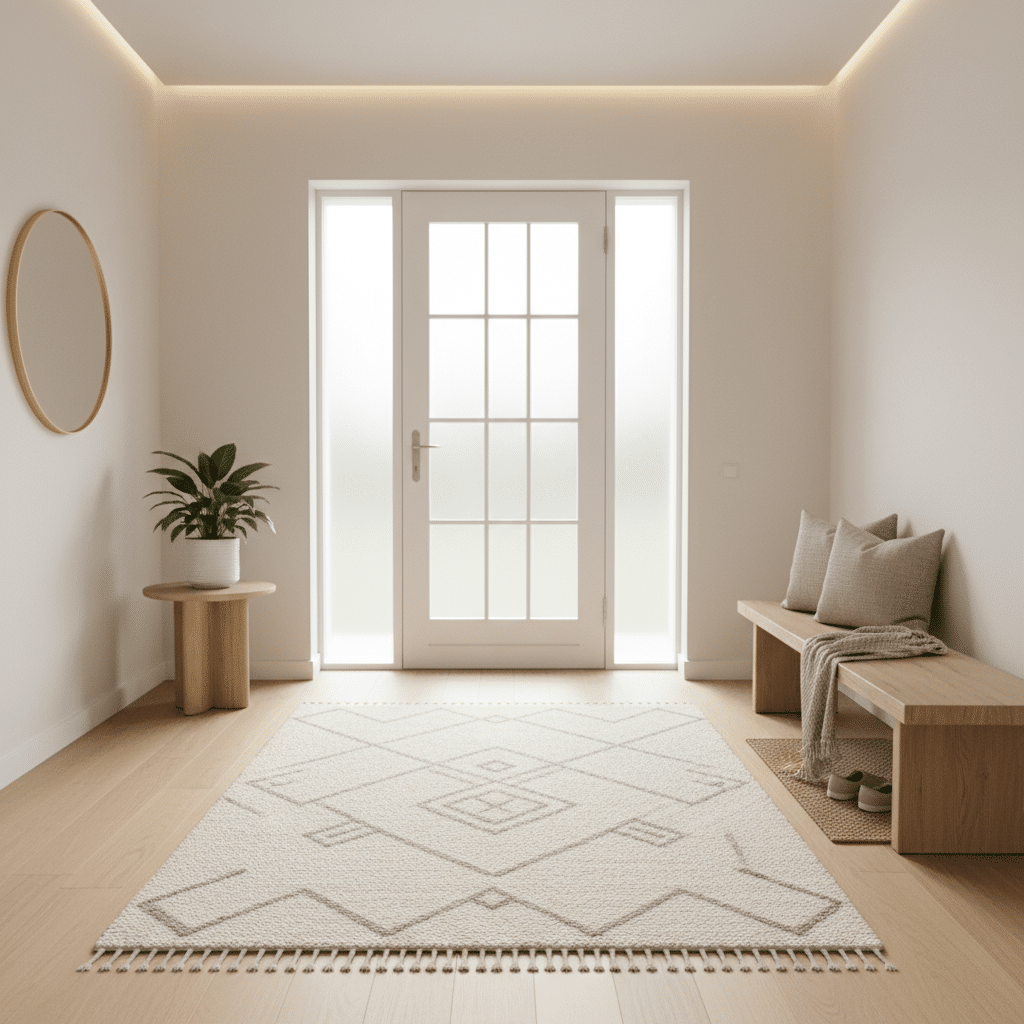
Small Changes, Big Impact: Starting Your Feng Shui Journey
Feeling a little overwhelmed by all this info? Don’t be! The best way to start with feng shui is to pick one small area or one principle and apply it. You don’t need to overhaul your entire home overnight.
Here are some casual starting points:
- Declutter your entryway and bedroom. Seriously, this alone will make a huge difference.
- Ensure your bed is in the Command Position. Prioritize this for better sleep and a sense of security.
- Add a vibrant, healthy plant to your living room.
- Open your windows for 10 minutes a day to let in fresh air.
- Fix anything broken that’s been nagging at you.
- Introduce one new color into a room that reflects an element you want to enhance.
- Explore soft aesthetic wallpaper options for a calming backdrop, like those found on
Sky Rye Design's soft aesthetic wallpaper page. - Think about how to layer a room like a pro to create depth and warmth, as discussed in How to Layer a Room Like a Pro Without Making it Look Cluttered.
The beauty of feng shui is that it empowers you to be an active participant in creating your environment. It’s about creating a dialogue between you and your home, fostering a space that truly resonates with your aspirations.
Conclusion: Your Home, Your Haven
Feng shui interior design isn’t about rigid rules or ancient superstitions; it’s about mindful living and creating a home that genuinely supports your well-being. By understanding the flow of energy, balancing the elements, decluttering, and thoughtfully arranging your space, you can transform your home into a personal sanctuary where good vibes naturally thrive.
Remember, your home is an extension of yourself. When you create a space that feels balanced, harmonious, and full of positive energy, you’re not just decorating; you’re nurturing your soul. So, take a deep breath, look around your space with fresh eyes, and start making those casual, impactful changes. Your well-being will thank you for it! Start small, stay curious, and enjoy the journey of unlocking good vibes in every corner of your life.
What role does decluttering play in feng shui?
Decluttering removes stagnant and negative energy, prevents mental overwhelm, and makes space for fresh Chi, helping your home feel more energized, organized, and peaceful.
How can I effectively start practicing feng shui in my home without feeling overwhelmed?
Begin with small, manageable steps like decluttering your entryway or bedroom, ensuring your bed is in the Command Position, adding a healthy plant, opening windows for fresh air, or incorporating a new color, and build from there gradually.
Why are the Five Elements important in feng shui, and how can I balance them?
The Five Elements—Wood, Fire, Earth, Metal, and Water—represent different energies that influence your space; balancing them through colors, shapes, and materials creates harmony and supports various aspects of your life, avoiding excess that can lead to imbalance.
How does the Command Position influence my home setup?
The Command Position involves placing your main furniture, like your bed, desk, or sofa, where you can see the door without being directly in line with it, providing a sense of security, control, and opportunity.
What is the core idea behind feng shui interior design?
Feng shui interior design is about arranging your environment to boost positive energy, or Chi, by creating harmony and balance in your space, which supports your well-being and allows good vibes to thrive.
- 2shares
- Facebook0
- Pinterest2
- Twitter0
